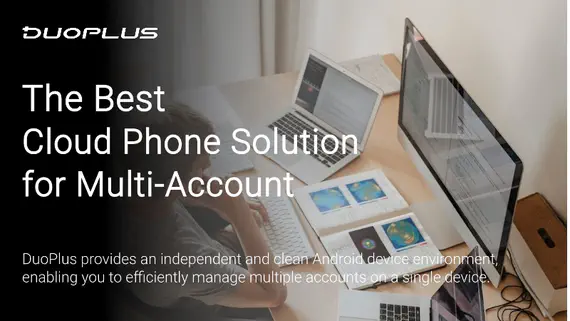
How to Manage Multiple Cross-Border Accounts Safely with Cloud Phones
In today's fiercely competitive cross-border e-commerce arena, most sellers opt for operational management tools to …
Table of Contents
In the trend of digital content creation, YouTube serves as the world's largest video content platform, currently at the heart of a profound transformation driven by artificial intelligence technology. With the maturation of generative AI, machine learning, and big data analytics, the doorway to content creation is being reconstructed, ushering creators into a new wave of innovation. This article delves into how AI tools can reshape the entire workflow of content creation on YouTube, offering strategies that assist creators in establishing a sustainable competitive edge in the process of algorithmic optimization.
Modern AI tools have already realized a complete workflow from conceptualization to product output. Based on large language models like GPT-4, these generative tools can automatically create structured, stylistically consistent video scripts based on trending topics and niche positioning. At the same time, visual generation tools like DALL-E 3 and Midjourney can create highly impactful visuals and video elements, significantly reducing the content production cycle and time costs.
AI algorithms not only analyze user viewing behavior but also deeply interpret audience sentiment and content preferences. Through Sentiment Analysis technology, creators can accurately capture audience emotional responses to content, and adjust their creation direction in real-time. Intelligent chatbots can further realize 24/7 audience interaction, transforming passive viewing into active participation.
AI tools provide creators with previously unavailable experimental space. Voice synthesis technology allows for the creation of unique voice line identifiers, while style transfer tools can transform video into unique artistic styles. These technologies not only enrich content presentation forms but also assist creators in establishing unique brand recognition.
AI technology is also continuously expanding in the field of video editing applications. By leveraging AI tools, creators can automatically cut videos, adjust audio tracks, add special effects, and enhance production efficiency. For example, video editing software like Adobe Premiere Pro has already begun integrating AI capabilities, making video editing processes more intelligent and convenient.
Establish a modular AI content creation workflow:
Build a comprehensive feedback analysis system:
Before starting to use AI tools, creators need to select the appropriate tools based on their specific needs. For example, using text generation tools like OpenAI's GPT series can help creators quickly draft video scripts, while image generation tools like DALL-E can create video thumbnails and other visual content. Understanding the functionalities and features of these tools can assist creators in effectively managing content production.
Utilizing AI for data analysis is key to improving content quality. Creators can use YouTube analytics tools to understand audience viewing habits and engagement metrics, thereby adjusting content strategies. By analyzing which types of videos achieve higher view rates and engagement rates, creators can optimize future content directions to better meet audience needs.
In the content creation process, continuous experimentation and iteration are crucial for achieving success. Creators should leverage AI tools to conduct multiple tests, such as experimenting with different titles, thumbnails, and video styles, to find the most suitable content format for their audience. Additionally, creators can analyze audience feedback during the initial release phase, then adjust and optimize content accordingly.
In the creation of unique content, AI can assist in establishing a distinct brand identity. By using AI-generated voiceovers, visuals, and thematic backgrounds, creators can craft a compelling and engaging virtual persona. This type of personalized branding not only enhances audience engagement but also increases audience loyalty to the channel.
AI technology applications allow creators to explore more diverse content formats. For example, utilizing AI-generated animations, simulation games, or virtual reality content can attract a broader audience base. Additionally, creators can experiment with short videos, live broadcasts, and various formats to satisfy different audience viewing preferences.
AI can not only be used for content creation but also assist creators in better engaging with their audience. Through chatbots and automated response systems, creators can respond to audience comments and questions in real-time, enhancing audience interaction. This immediate feedback mechanism can improve audience engagement and increase their loyalty to the channel.
AI technology is redefining the rules of competition in YouTube content creation, but the core competitive edge still comes from the unique perspectives and creative power of creators. Successful creators will be those who can seamlessly integrate human intelligence with AI capabilities, leveraging technology to enhance their unique creative expression.
DuoPlus Cloud Phone
Protect your multiple accounts from being

In today's fiercely competitive cross-border e-commerce arena, most sellers opt for operational management tools to …

Telegram has become the fastest-growing real-time communication platform globally. As a result, Telegram Bots have …
No need to purchase multiple real phones.
With DuoPlus, one person can operate numerous cloud phones and social media accounts from a single computer, driving traffic and boosting sales for you.
